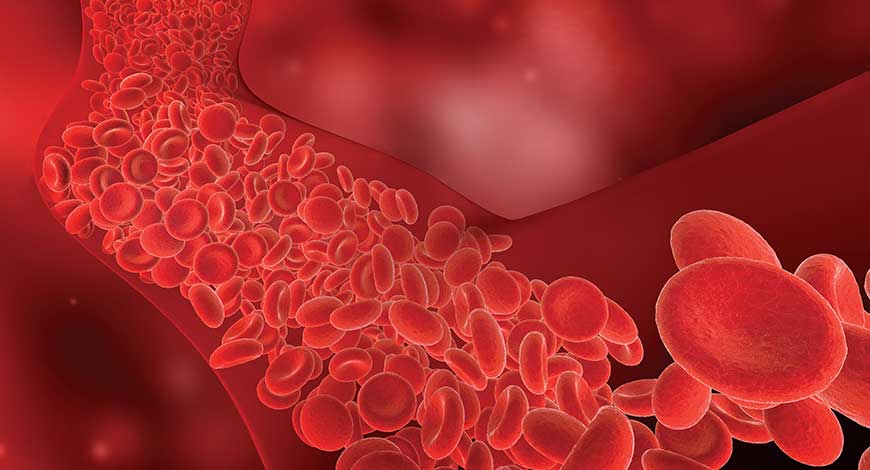MB Stories
Technological convergence -A new era in hematology

Hematology analyzers advance diagnostics with proactive technology are shaping a new era in medical precision and efficiency.
In the expansive landscape of contemporary healthcare, hematology analyzers have emerged as transformative agents, steering a proactive paradigm in technological advancements. Originally designed for routine blood cell counting, these instruments have evolved into sophisticated entities, incorporating cutting-edge technologies like electrical impedance, flow cytometry, and optical scattering. Their importance lies in their pivotal role in elevating diagnostic excellence, transcending basic information provision.
Modern hematology analysis has witnessed significant technological advancements, revolutionizing diagnostic capabilities through light scatter and fluorescence. Utilizing the Light Scatter principle, hematology analyzers assess various parameters of blood cells, providing insights into size, granularity, and complexity. The integration of fluorescence enhances the identification and characterization of specific cell types, contributing to improved diagnostic potential. These advancements not only enhance diagnostic accuracy but also pave the way for more comprehensive insights into blood-related disorders, ultimately benefiting patient outcomes.
The global hematology analyzer market, estimated at USD 5.31 billion in 2022, is projected to reach USD 6.57 billion by 2030, growing at a CAGR of 4.2 percent. Key factors driving this demand include a preference for automated hematology instruments, technological advancements, and the integration of flow-cytometry techniques. North America dominates the market, holding a 90.3 percent share in 2022, driven by the increasing prevalence of anemia and the demand for complete blood count analysis.
Recent advancements have spurred the transition from 3-part to 5-part hematology analyzers, providing more detailed insights into blood composition. The upgrade reflects a commitment to precision medicine, enabling informed decisions based on nuanced insights into blood cell populations. Analytical Performance Evaluation involves a comprehensive assessment of precision, accuracy, linearity, and carryover, with 5-part analyzers excelling in terms of precision and accuracy
Artificial intelligence (AI) integration into hematology is reshaping diagnostics, particularly through the automation of peripheral blood smear analysis. Traditionally labor-intensive, this process is streamlined by AI, expediting blood cell identification, reducing errors, and enhancing precision. Leveraging machine learning, AI scrutinizes vast datasets, enabling early detection of hematological conditions and personalized medicine with tailored treatment plans based on historical patient data.
Despite its potential, AI in hematology faces challenges. Standardized data is crucial for efficacy, necessitating collaborative efforts to establish data-sharing frameworks. The interpretability of complex AI models remains a consideration, requiring a balance between intricacy and clinical acceptance.
AI’s impact extends beyond automation, offering innovative approaches to analysis and diagnosis. In hematological image analysis, AI collaborates with professionals, ensuring accurate results in peripheral blood smear analysis. Predictive analytics by AI enable proactive healthcare, aligning with personalized medicine principles.
The successful integration of AI in hematology demands collaboration for standardized data, interpretability, and maximizing its potential. In conclusion, AI in hematology signifies not just automation but a transformative force, promising improved diagnostic precision and innovation in patient care.
Fluidics – The heart of automated hematology analysis
 Mathias Beer
Mathias Beer
Customer Care Director,
Boule Diagnostics
An automated cell counter is technically a highly complex system. Multiple methods are run in parallel, providing results for a range of parameters related to number, concentration, and size. Analytical quality and performance are paramount, as results form the basis for decisions on numerous medical conditions.
The fluidic system is the heart of the analyzer. Commercially available hematology analyzers feature a range of design solutions – all with different advantages and disadvantages. A thorough understanding of flow dynamics and control of pressurized fluids is critical when designing a fluidic system to be used in a hematology analyzer.
Accurate results start with precise sample aspiration. The aspiration method is, therefore, a critical part of measurement quality and is reflected in the accuracy of every reported result. A micro-pipette method benefits from a small aspiration volume; however, a small decrease in blood volume will hugely impact the result. The method also requires that the micro-dilutor is completely sealed to avoid leakage from the syringe.
The aspirated volume is greater with a shear valve. Compared with the micro-pipette method, shear valve aspiration is controlled by a blood sensor and a precise volume is cut and brought to a closed mixing chamber, using diluent reagent. This way, no mechanical movement of the aspiration module is required, reducing the need for moving parts, thereby reducing the maintenance needs. The closed mixing cup is also less susceptible to accumulation of dust and other impurities. As the shear valve cuts the same precise volume for each measurement, the analyzer is not required to be frequently calibrated.
For flow control, a piston-driven solution normally benefits from less fluidic circuit volume and reagent consumption compared with a system where flow is controlled by air and vacuum pumps. However, a piston-driven system is in need for daily cleaning to prevent protein buildup in the system. Flow control by air and vacuum pumps wins in robustness by being less prone to leakage and reduces the need for moving mechanical parts and other components that might increase the maintenance costs.
The difference between hematology systems may not be obvious from the technical or performance specifications or even revealed during installation, operation, and performance qualifications. It is, therefore, good to have a basic knowledge about the strengths and weaknesses of different design solutions before taking a hematology system into clinical use.
In response to the demand for rapid diagnostics, innovations include bench-top Point-of-Care (POC) analyzers, microfluidics, and advanced sensing technologies. These developments, coupled with AI algorithms for rapid interpretation, contribute to improved turnaround times and overall workflow efficiency.
The landscape of hematology analysis is undergoing a significant transformation, driven by advancements in technology and innovative research. The shift toward mass spectrometry represents a departure from traditional methods, promising a more comprehensive analysis of blood components. Simultaneously, laboratory techniques are continuously refined, contributing to the efficiency, accuracy, and overall quality of hematology diagnostics.
AI in hematology – The future
 Nidhi Joshi
Nidhi Joshi
CEO,
Biogeny Diagnostics (A Beacon Group Company)
Artificial intelligence (AI) has emerged as a powerful tool in various fields of medicine, including hematology. Considerable focus has been particularly directed toward hematologic malignancies because of the complexity in detecting early symptoms. Many patients with blood cancer do not get properly diagnosed until their cancer has reached an advanced stage with limited treatment prospects. Hence, the state-of-the-art revolves around the latest AI applications in hematology management.
AI in hematology has revolutionized how diseases are diagnosed, monitored, and treated. AI algorithms can automate analyzing blood samples and help hematologists diagnose more accurately. AI-based algorithms can analyze images of blood samples to identify and classify different types of blood cells. This can help hematologists detect abnormalities, such as leukemia or lymphoma. AI algorithms can also analyze genetic data to identify mutations that may cause blood disorders.
In the medical literature, the term artificial intelligence is often used interchangeably with machine learning. However, a distinction should be made. AI describes computational programs that stimulate and mimic human intelligence, such as problem solving and learning. Machine learning is a subdomain of AI, involving the automatic discovery of patterns within data. Expanding data, improvement in hardware capabilities, and cloud computing are driving the development of machine learning algorithms.
Machine learning can be helpful in various tasks, such as narrowing a differential diagnosis, aiding therapy selection, generating risk predictions, reducing medical errors and improving productivity. Applications in hematology are steadily increasing – the main domains are predictive modelling, diagnostics, and image analysis.
AI can transform the discipline of hematology completely. AI has the potential to enhance the accuracy and efficiency of hematology procedures. This may be accomplished by automating the examination of blood samples, predicting the course of illness, speeding up the discovery of new drugs, and improving patient treatment. Nevertheless, it is necessary to ensure these technologies are created and used responsibly and ethically, considering concerns like prejudice, privacy, and openness. AI in hematology should be seen as a tool that may supplement the job of healthcare professionals rather than as something that can replace them.
The future of hematology analysis is characterized by a transition from traditional methodologies towards more advanced approaches. Mass spectrometry stands out as a transformative technology, offering detailed insights and high-dimensional analysis capabilities. Ongoing research reflects a commitment to continuous improvement and a deeper understanding of blood-related disorders, promising not only improved diagnostic capabilities but also a more profound comprehension of the complexities of blood composition and related disorders.
The evolution of hematology analyzers represents a journey from basic cell counting to sophisticated instruments at the forefront of medical diagnostics. Technological advancements, AI integration, and innovations in workflow efficiency collectively contribute to the precision and efficiency of these instruments. As we look toward the future, the convergence of technology and research promises a new era in hematology analysis, driven by innovation and a commitment to advancing medical science. The multifaceted nature of these advancements positions hematology analyzers as indispensable tools in the pursuit of diagnostic excellence and improved patient outcomes.












